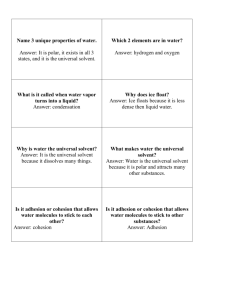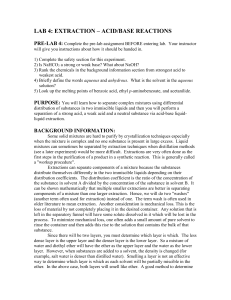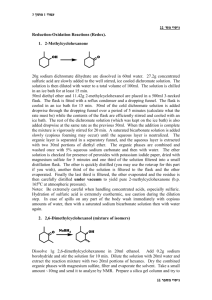Efficient extraction of highly polar solvents from reaction mixtures
advertisement
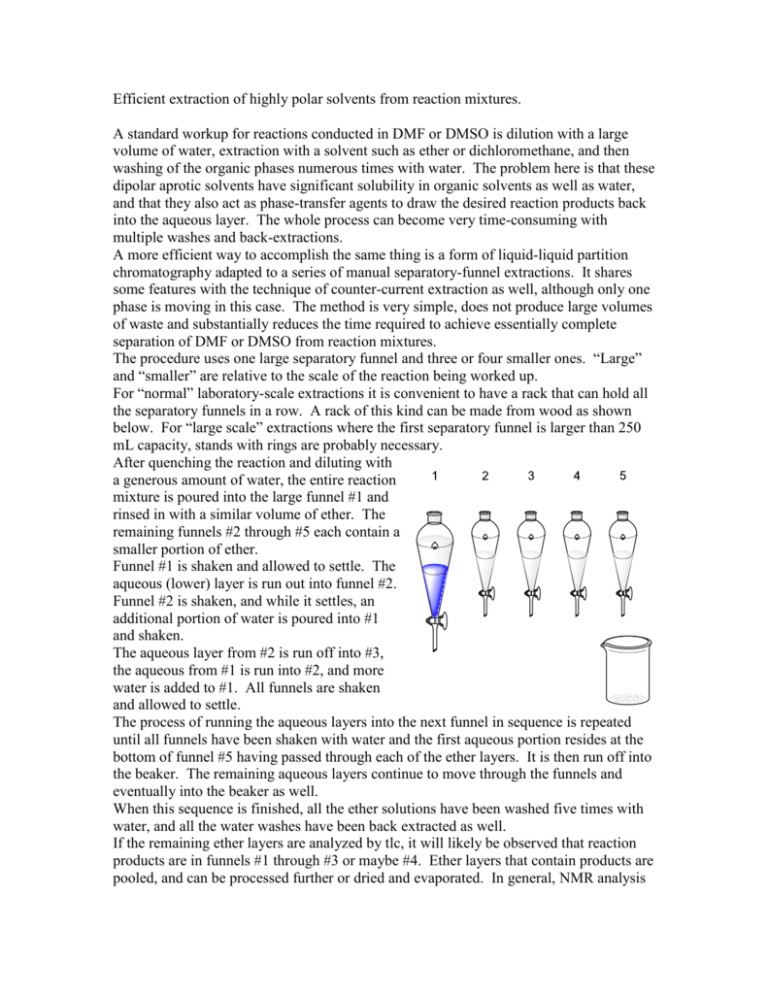
Efficient extraction of highly polar solvents from reaction mixtures. A standard workup for reactions conducted in DMF or DMSO is dilution with a large volume of water, extraction with a solvent such as ether or dichloromethane, and then washing of the organic phases numerous times with water. The problem here is that these dipolar aprotic solvents have significant solubility in organic solvents as well as water, and that they also act as phase-transfer agents to draw the desired reaction products back into the aqueous layer. The whole process can become very time-consuming with multiple washes and back-extractions. A more efficient way to accomplish the same thing is a form of liquid-liquid partition chromatography adapted to a series of manual separatory-funnel extractions. It shares some features with the technique of counter-current extraction as well, although only one phase is moving in this case. The method is very simple, does not produce large volumes of waste and substantially reduces the time required to achieve essentially complete separation of DMF or DMSO from reaction mixtures. The procedure uses one large separatory funnel and three or four smaller ones. “Large” and “smaller” are relative to the scale of the reaction being worked up. For “normal” laboratory-scale extractions it is convenient to have a rack that can hold all the separatory funnels in a row. A rack of this kind can be made from wood as shown below. For “large scale” extractions where the first separatory funnel is larger than 250 mL capacity, stands with rings are probably necessary. After quenching the reaction and diluting with a generous amount of water, the entire reaction mixture is poured into the large funnel #1 and rinsed in with a similar volume of ether. The remaining funnels #2 through #5 each contain a smaller portion of ether. Funnel #1 is shaken and allowed to settle. The aqueous (lower) layer is run out into funnel #2. Funnel #2 is shaken, and while it settles, an additional portion of water is poured into #1 and shaken. The aqueous layer from #2 is run off into #3, the aqueous from #1 is run into #2, and more water is added to #1. All funnels are shaken and allowed to settle. The process of running the aqueous layers into the next funnel in sequence is repeated until all funnels have been shaken with water and the first aqueous portion resides at the bottom of funnel #5 having passed through each of the ether layers. It is then run off into the beaker. The remaining aqueous layers continue to move through the funnels and eventually into the beaker as well. When this sequence is finished, all the ether solutions have been washed five times with water, and all the water washes have been back extracted as well. If the remaining ether layers are analyzed by tlc, it will likely be observed that reaction products are in funnels #1 through #3 or maybe #4. Ether layers that contain products are pooled, and can be processed further or dried and evaporated. In general, NMR analysis of the crude material will not show any sign of residual DMF or DMSO after this treatment. What is happening here is this: when the quenched mixture is initially extracted in funnel #1, most of the polar solvent goes into the water layer. Some product and ether are also partitioned into the water, and some polar solvent remains in the first ether layer. The aqueous layer moves into funnel #2 where it encounters fresh ether. This extracts product out of the water, and it may also take up some polar solvent. The process is repeated in each funnel. But now consider the subsequent water washes. When the organic layer in funnel #1 is washed with water, the residual polar solvent is extracted. The actual amount of this polar material is relatively small since most of it went off with the first portion of water. Thus, much less if any of the desired products are partitioned into the water. This wash moves through the subsequent ether layers, removing polar solvent from each. Each successive water wash moves polar solvent forward through the funnels, but as the amount of polar solvent in the earlier funnels drops the ability of each water layer to remove desired product is reduced too. The result is essentially an “elution” of the polar solvent with “retention” of the less-polar organic products in the earlier ether layers. In general no more than five water washes are needed although in certain situations more may be required. The process can be adapted to the use of solvents that are heavier than water as well. If the extraction solvent is dichloromethane, the stationary phase becomes the water. Funnel #1 is charged with the aqueous quenched mixture and dichloromethane, and smaller portions of water are put into funnels #2 through #5. Dichloromethane portions are passed in sequence through the funnels and collected in the beaker having had the polar solvent washed out.

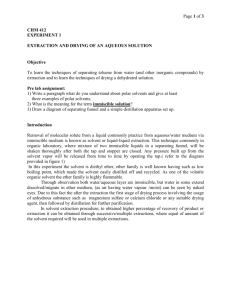
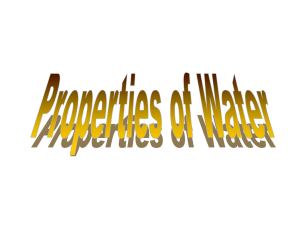
![AL Chem Written Practical (Organic Chemistry) [F.7]](http://s2.studylib.net/store/data/005797652_1-4911d95dd6c8a0840f727bd387aa6027-300x300.png)
